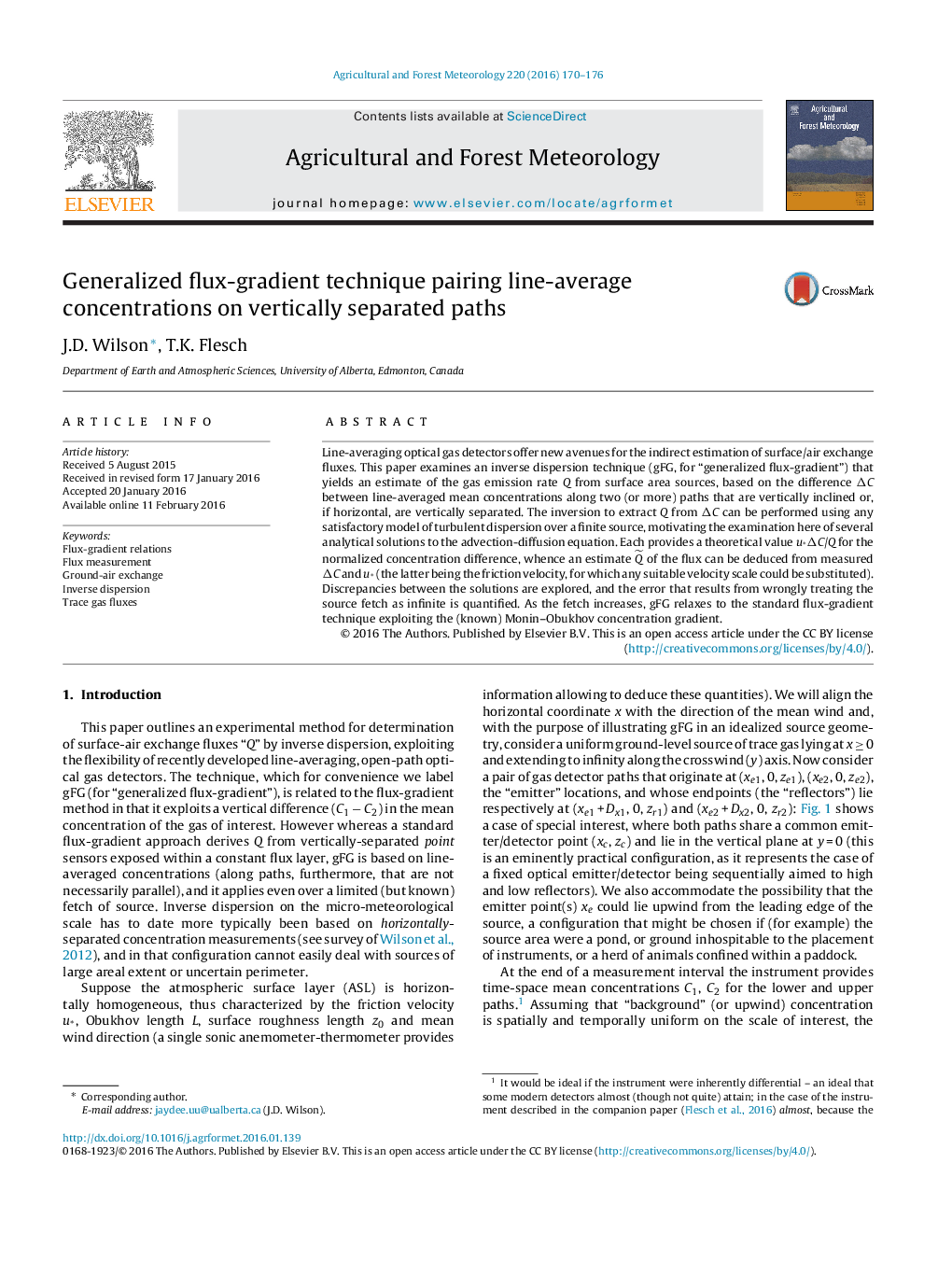| Article ID | Journal | Published Year | Pages | File Type |
|---|---|---|---|---|
| 6537011 | Agricultural and Forest Meteorology | 2016 | 7 Pages |
Abstract
Line-averaging optical gas detectors offer new avenues for the indirect estimation of surface/air exchange fluxes. This paper examines an inverse dispersion technique (gFG, for “generalized flux-gradient”) that yields an estimate of the gas emission rate Q from surface area sources, based on the difference ÎC between line-averaged mean concentrations along two (or more) paths that are vertically inclined or, if horizontal, are vertically separated. The inversion to extract Q from ÎC can be performed using any satisfactory model of turbulent dispersion over a finite source, motivating the examination here of several analytical solutions to the advection-diffusion equation. Each provides a theoretical value u*ÎC/Q for the normalized concentration difference, whence an estimate QË of the flux can be deduced from measured ÎC and u* (the latter being the friction velocity, for which any suitable velocity scale could be substituted). Discrepancies between the solutions are explored, and the error that results from wrongly treating the source fetch as infinite is quantified. As the fetch increases, gFG relaxes to the standard flux-gradient technique exploiting the (known) Monin-Obukhov concentration gradient.
Related Topics
Physical Sciences and Engineering
Earth and Planetary Sciences
Atmospheric Science
Authors
J.D. Wilson, T.K. Flesch,
